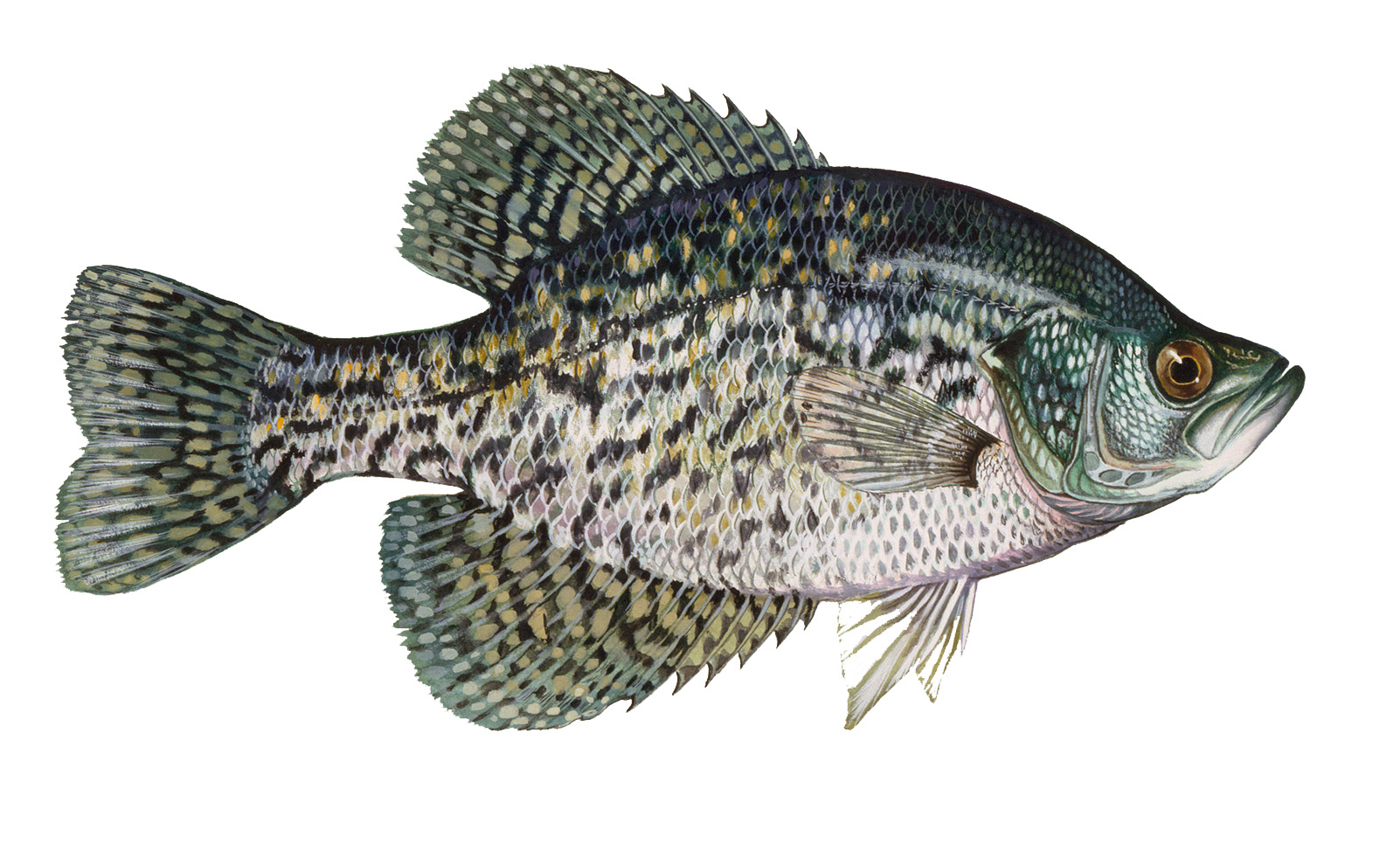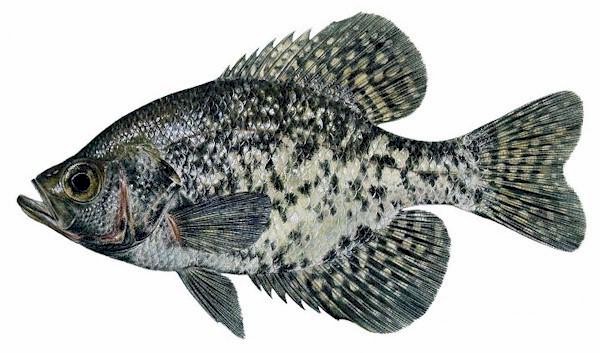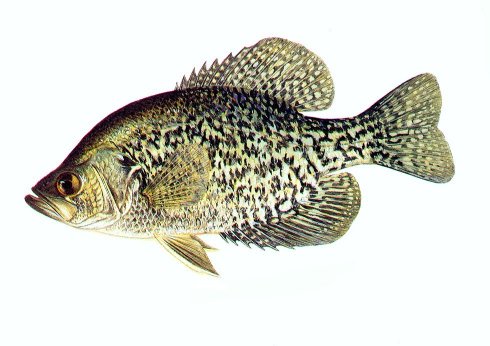
Pomoxis nigromaculatus
FAMILY
Centrarchidae
TAXONOMY
Pomoxis nigromaculatus Lesueur, 1829, Wabash River, Indiana,
United States. No subspecies are recognized.
OTHER COMMON NAMES
English: Calico bass, grass bass, moonfish, oswego bass, speckled
bass, strawberry bass; French: Marigane noire.
PHYSICAL CHARACTERISTICS
Maximum total length 19.3 in (49 cm). Rather flat, broad, silvery
fishes with sloping foreheads and a black, mottled pattern
on the sides. Fins are also noticeably mottled. The similar
white crappie (P. annularis) is less mottled and has vertical
banding on its sides.
DISTRIBUTION
Central and eastern North America, south to Florida and
Texas, United States, and north to Quebec and Manitoba,
Canada. Widely introduced throughout the United States and
other countries.
HABITAT
Freshwater species. Prefers clear, weedy lakes, ponds, and
slow-stream backwaters.
BEHAVIOR
Schools during the day in deep water around structures. Crepuscular
feeder; moves to shallower water to feed. Exciting
sport fish that puts up a good fight when hooked by anglers.
FEEDING ECOLOGY AND DIET
Feeds both amidst vegetation and in open waters on small
fishes and invertebrates. Primarily feeds at dawn and dusk.
REPRODUCTIVE BIOLOGY
Spawning occurs in late spring and early summer. Males
make nests, sometimes near other males, in the substrate of
weedy or rocky areas. Females may mate with several males.
Females lay spherical, demersal, adhesive eggs singly or perhaps
in small clumps. Males guard the eggs and young, which
hatch in two to three days. Reach sexual maturity by two to
four years old.
CONSERVATION STATUS
Not threatened.
SIGNIFICANCE TO HUMANS
Fished for sport in the United States and Canada.
Photo Gallery of - Black crappie





 Animalia Life
Animalia Life